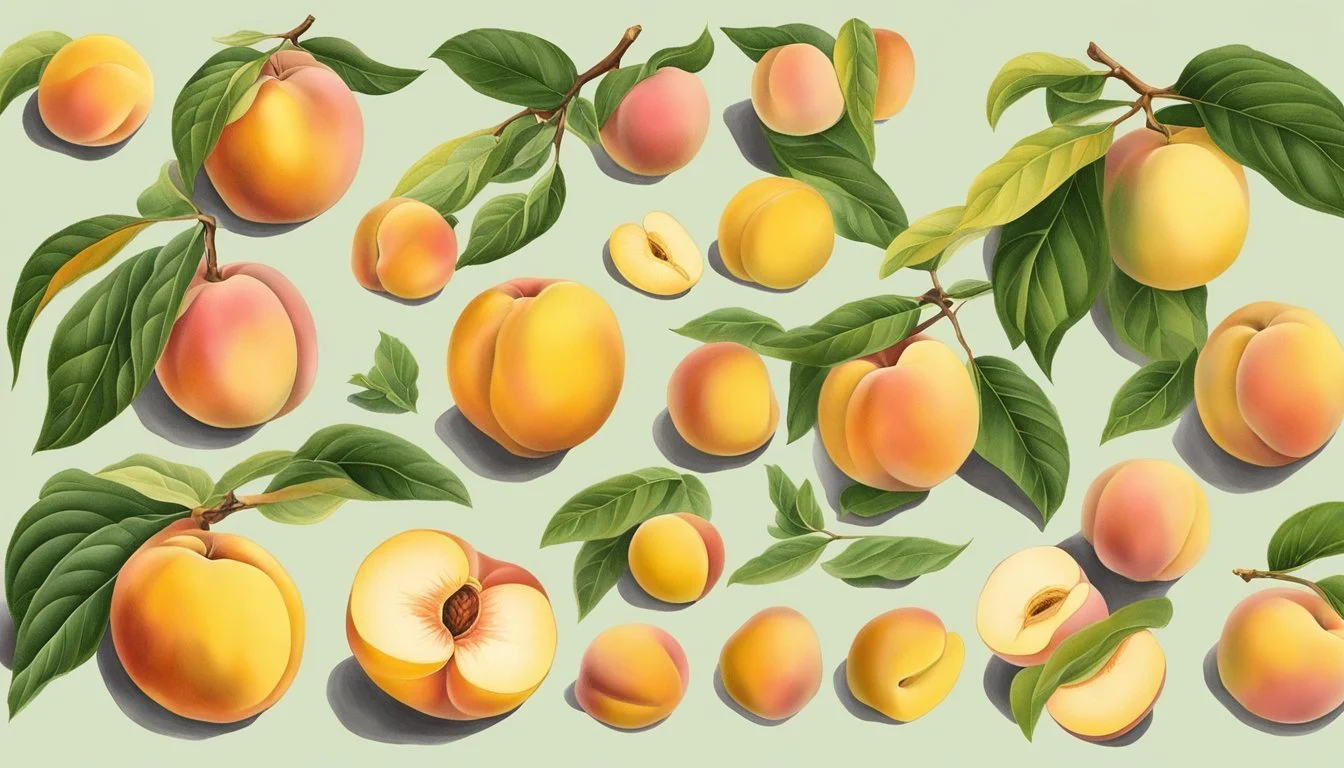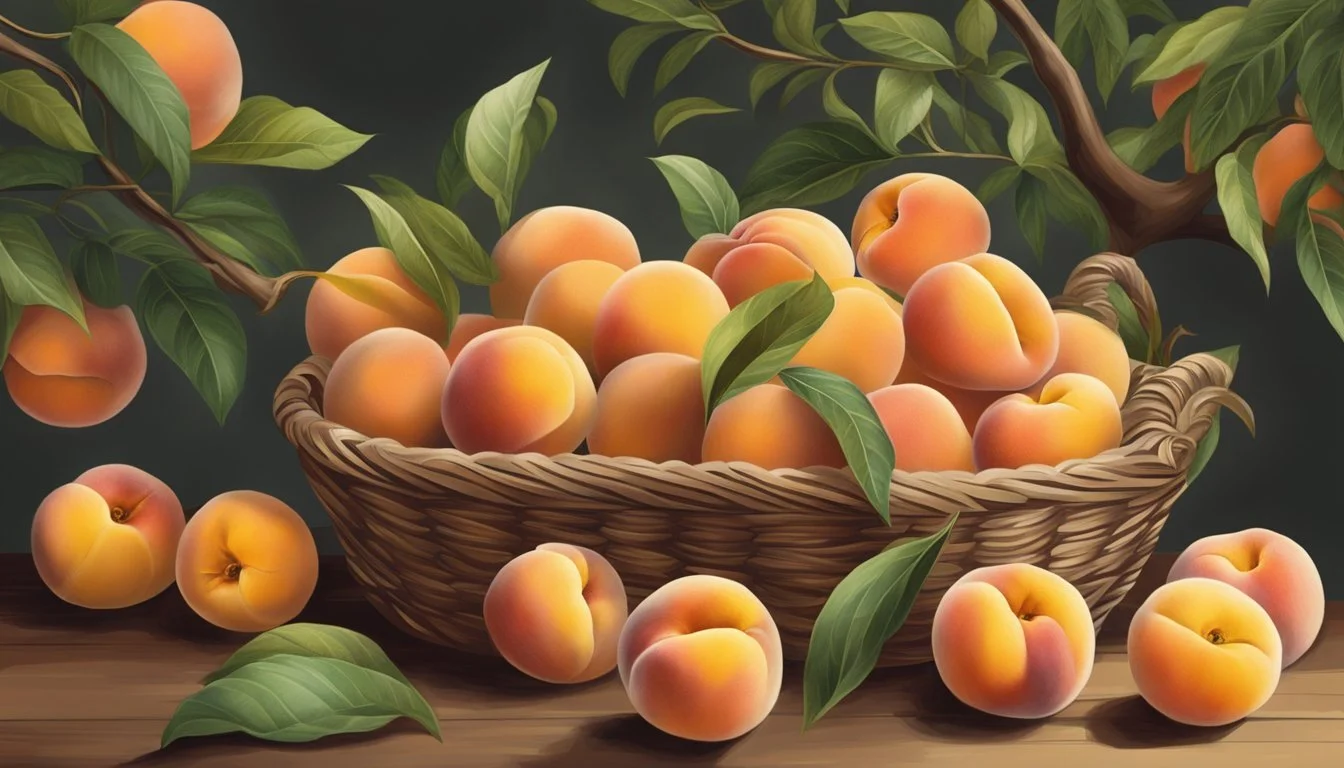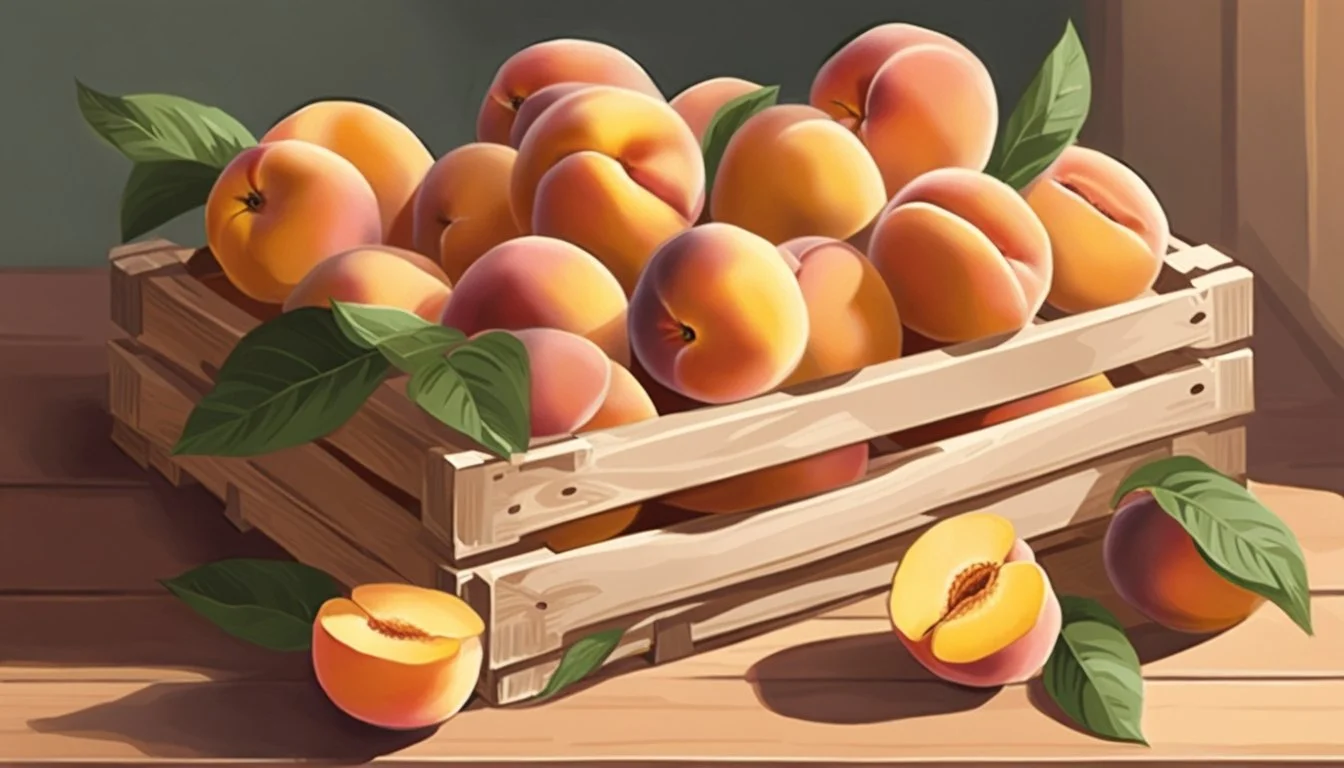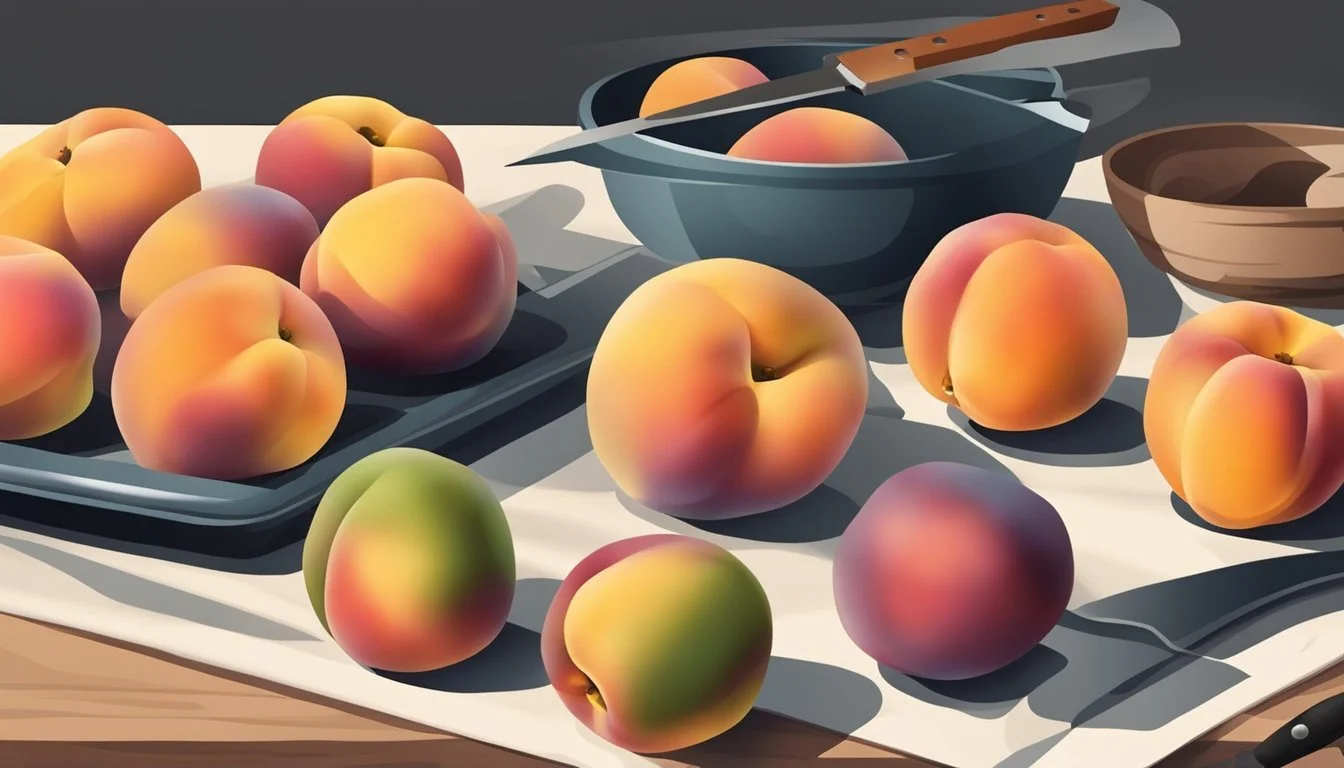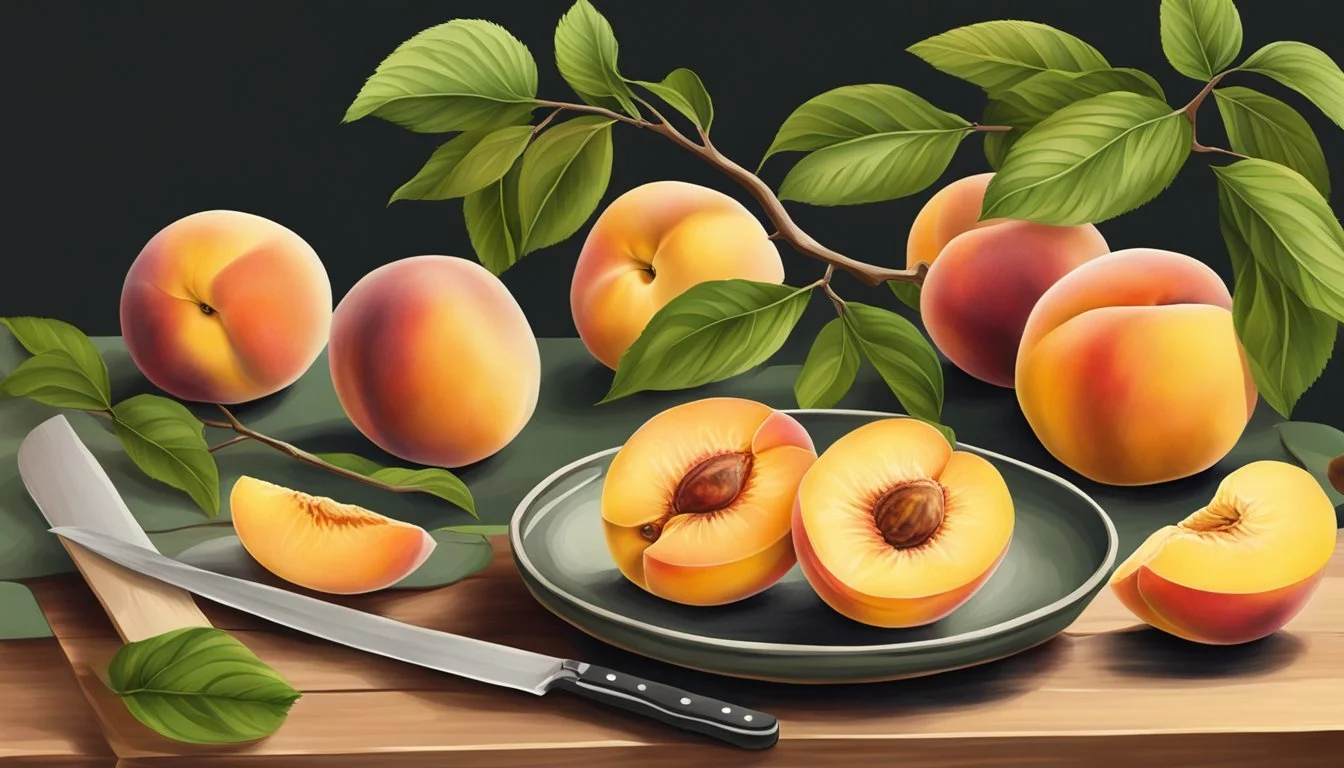How to Tell if Cresthaven Peaches Are Ripe
Your Essential Ripeness Checklist
Understanding when Cresthaven peaches are ripe for picking is crucial for both gardeners and fruit consumers who seek that perfectly sweet and juicy treat. Cresthaven peaches, known for their flavorful and firm nature when fully ripe, are typically ready for harvest in the late summer. The ripeness of these peaches is attributed to a combination of factors including skin color, firmness, and aroma. While color transformations can be a clear indication, ripeness is not determined by color alone. It is essential to factor in the peach’s firmness to the touch and its sweet, floral fragrance, both of which hint at the readiness of the fruit for consumption.
Identifying the perfect point of ripeness of Cresthaven peaches is not only important for flavor but also for the fruit's nutritional value and shelf life. Ripe peaches tend to have a fully developed profile of vitamins, antioxidants, and fiber. Additionally, understanding the stages of ripeness can assist in proper harvesting, handling, and storage techniques, ensuring that the peaches maintain their delectable quality and longevity after being picked. In contrast, peaches picked before reaching full ripeness may lack flavor and sweetness, while overripe peaches can quickly become bruised and spoil.
Key Takeaways
Cresthaven peaches are ready to pick when they exhibit a combination of color change, firmness, and a sweet aroma.
Accurate identification of ripeness ensures peak flavor, nutritional value, and optimal storage life.
Harvesting at the precise stage of ripeness impacts the overall quality and handling of Cresthaven peaches.
Identifying Cresthaven Peaches
In selecting a ripe Cresthaven peach, one must recognize its distinct characteristics and differentiate between its varieties to ensure the quality of the fruit.
Characteristics of Cresthaven Peaches
Cresthaven peaches (Prunus persica 'Cresthaven') are known for their robust features and are easily identifiable. Here are some specific characteristics:
Size: The peaches typically average about 3 inches in diameter.
Color: They display a vibrant yellow background adorned with rosy red spots—this blush is more pronounced based on sun exposure and ripeness.
Flesh: The yellow flesh inside is firm and also resists browning upon cutting, distinguishing it from white-fleshed peach varieties.
Shape: Cresthaven peaches maintain a uniform, round shape.
Cresthaven Peach Varieties
While the Cresthaven peach itself is a distinct variety of peach, there are other similar varieties that can be confused with it. Each variety has subtle differences in size, coloring, and ripening times. For accuracy in identification, it's imperative to compare these aspects carefully with known standards of the Cresthaven variety, which ripens towards the late July to early August timeframe and promotes a near fuzzless exterior.
Stages of Peach Ripeness
Identifying the perfect stage of ripeness for Cresthaven Peaches involves observing color changes, assessing firmness, and noting the fruit's scent. This section outlines these attributes to help determine when peaches have reached optimal ripeness.
From Green to Golden Yellow
Cresthaven Peaches transition from green to golden yellow as they ripen. Unripe peaches exhibit a greenish hue, especially around the stem where light exposure is minimal. As the fruit matures, the green color fades, and the skin adopts a warm, golden yellow tone indicative of ripening. A fully ripe Cresthaven peach lacks green undertones, while overripe fruit might start showing signs of wrinkling.
Understanding Peach Firmness
The firmness of a peach is a reliable indicator of its ripeness. An unripe peach will feel firm to the touch, while a ripe Cresthaven peach should yield slightly under gentle pressure but still maintain some firmness. A soft peach is often at the peak of ripeness and ready to eat, whereas a mushy peach may be overripe. To measure firmness scientifically, a penetrometer could be used, though a tactile examination is generally sufficient for everyday purposes.
Aroma and Scent Notes
A ripe Cresthaven peach emits a distinctive sweet aroma that is readily detectable. Early in the ripening process, the fruit may be relatively odorless, but as it matures, it develops a sweet, pleasing floral scent. The strength and pleasantness of the aroma increase as the Cresthaven peach becomes fully ripe; a strong, sweet, and floral fragrance is a hallmark of ripe peaches. An overripe peach may have a fermented or sour odor.
How to Tell if a Peach is Ripe
Determining the ripeness of Cresthaven peaches involves a multi-sensory evaluation, focusing on visual cues, tactile feedback, and scent.
Visual Inspection
A ripe Cresthaven peach typically displays a deep yellow to orange ground color, indicative of maturity. Clues to look for include:
Blush: A reddish hue on the side that has been exposed to the sun.
Green Undertones: Absence of green shades is essential; green indicates under-ripeness.
Dark Spots and Bruises: These may signify over-ripeness or damage.
Tactile Assessment
The touch test can be telling. A ripe peach should have a slight give when gently squeezed. Remember:
Touch: Practice gentle pressure with the fingers; the peach should feel firm but not hard.
Feel: Overly soft or mushy texture could indicate the peach is past its prime.
Scent Evaluation
A ripe Cresthaven peach will emit a sweet, distinctly peachy aroma. Use your nose:
Smell: Bring the peach close and sniff for a fragrant, fruit-forward scent.
Senses: No fragrance or a weak smell can mean the peach needs more time to ripen.
The Science of Ripening
Understand the ripening process gives gardeners and consumers alike an edge in selecting the perfect Cresthaven peach. It involves ethylene gas, temperature, and sunlight—all essential factors in fruit maturity.
Ethylene Gas and Ripening
Cresthaven peaches, like many fruits, release ethylene gas, a natural plant hormone that accelerates ripening. As a peach matures, its production of ethylene gas increases, inducing changes in texture, sweetness, and color. These changes signify that the peach is transitioning from firm and tart to soft and sweet. When a peach produces ample ethylene, it can hasten the ripening process of surrounding peaches, which is why they're often stored together to ripen more quickly at room temperature.
Effects of Temperature on Ripening
Temperature plays a pivotal role in the ripening of peaches. Cresthaven peaches ripen optimally at room temperature, whereas colder temperatures slow down ethylene production and, consequently, the ripening process. Conversely, excessive heat can cause the fruit to over-ripen and spoil. Maintaining a consistent, moderate temperature can ensure a smooth progression from an underripe to a ripe peach.
Sun Exposure and Fruit Development
Sunlight is crucial in the earlier development stages of a Cresthaven peach. Direct sun exposure to the tree contributes to the peach's color, size, and initial sugar development, while sun exposure on the fruit itself is less critical during the latter stages of ripening. The transition from a light yellow color towards a deeper golden hue, often accompanied by rosy red spots, is aided by adequate sunlight during growth and indicates that the fruit is nearing ripeness. However, once off the tree, peaches continue to ripen without direct sunlight, relying mainly on ethylene gas and ambient temperature.
Harvesting and Handling Cresthaven Peaches
Harvesting Cresthaven peaches at the right time ensures optimal flavor and texture, while proper handling minimizes bruising due to their tender nature.
Best Practices for Picking
Cresthaven peaches are ready to harvest when they exhibit a deep yellow background color with a red blush and yield slightly to gentle pressure. Testing by touch, rather than color alone, is crucial as ripe peaches bruise easily. Picking should be done carefully to avoid any damage to the delicate flesh.
Timing: Only pick Cresthaven peaches when they are ripe, as they do not continue to ripen significantly after harvest.
Technique: Support the peach with one hand and twist gently with the other hand to release the fruit from the branch.
Frequency: Individual trees may require several picking sessions, as not all peaches will ripen simultaneously.
Picking requires labor and attention to detail, but it is necessary to harvest by hand to ensure the quality of each peach. It's essential to be vigilant as Cresthaven peach trees can be highly productive, and missed ripe peaches can lead to waste.
Post-Harvest Handling
Post-harvest care of Cresthaven peaches is vital to preserve their quality until consumption or processing. Proper handling is crucial as these fruits are prone to bruising.
Immediate Cooling: After picking, peaches should be cooled as soon as possible to extend their shelf life.
Storage Conditions: Store at temperatures of 0°C to 1°C with high humidity levels to slow ripening and reduce water loss.
Transportation: Use cushioned containers for transportation to minimize the pressure on the peaches and prevent bruising.
To handle Cresthaven peaches correctly, it's important to transport them in single layers or in cushioned, shallow containers, and to avoid stacking which leads to pressure that can cause bruising.
Storing and Preserving Ripeness
Once Cresthaven peaches reach their peak ripeness, their sweet, juicy flavor is at its best. Proper storage is critical for maintaining that peak quality, whether for immediate consumption or for enjoyment at a later time.
Short-Term Storage Solutions
For peaches that are ripe and ready to eat within a day or two, they should be stored at room temperature on the counter. If they are not quite ripe, one can place unripe peaches in a paper bag on the counter to help them ripen faster due to the concentration of ethylene gas. It is important to check these peaches daily, as they can quickly progress from underripe to perfectly ripe.
Extending Freshness
To extend the freshness of ripe Cresthaven peaches, they should be placed in the refrigerator. This slows down the ripening process and can preserve the ripe fruit for a few extra days. Ideally, peaches should be stored in the crisper drawer to maintain optimal humidity levels. When storing in the refrigerator:
Use a shallow container to allow for air circulation.
Avoid stacking peaches on top of each other to prevent bruising.
For unripe peaches that one does not want to ripen too quickly, they should also be kept in the refrigerator where the colder temperature will keep the ripening process slow and controlled.
Troubleshooting Common Issues
Identifying the ripeness of Cresthaven peaches can occasionally pose challenges. This section provides clear solutions for common ripeness issues, ensuring the reader can discern and respond to the state of their peaches effectively.
Dealing with Underripe Peaches
When Cresthaven peaches are underripe, they tend to be firm with little give upon gentle pressure. If the skin near the stem appears light yellow or has green tinges, these peaches require more time to mature. They can be left at room temperature to ripen, avoiding direct sunlight. Check firmness daily:
Unripe: Firm with no give
Becoming Ripe: Slight softening, especially near the top
Monitoring these peaches for incremental changes in firmness and color is key to catching them at the perfect level of ripeness.
Preventing and Identifying Overripeness
Overripe Cresthaven peaches will feel too soft, often with a mealy or mushy texture when cut into. They may also have wrinkly skin, signaling moisture loss and degradation of flesh quality. To prevent overripeness, store peaches in a cool place once they've reached optimal firmness and aroma. Indications of overripeness include:
Texture: Mealy or excessively soft
Skin: Wrinkled or shows signs of withering
It's vital to inspect peaches regularly and consume or process them before they reach an overripe state that would render them unsatisfactory for consumption.
Preparing and Serving Ripe Peaches
Once the Cresthaven peaches have attained perfect ripeness, characterized by their sweet aroma and juicy flesh, they are ready to be prepared and served. This guide provides suggestions on how to present these peaches in simple servings and how to incorporate them into a variety of recipes.
Simple Serving Ideas
For a straightforward snacking experience, one can simply wash the ripe peach, slice it, and enjoy it as is. The natural sweetness and rich flavor are best appreciated in this form. Alternatively, adding a dollop of cream or a scoop of ice cream alongside freshly sliced peaches can elevate the tasting experience.
Freshly Sliced: Wash and cut the peach into wedges to enjoy the full, unadulterated flavor.
Peaches and Cream: Serve slices with a spoonful of cream to add a luxurious texture.
Ice Cream Topping: Chopped peach pieces make an excellent topping for vanilla or peach-flavored ice cream.
Incorporating Peaches into Recipes
Cresthaven peaches' sweetness and juicy texture make them a versatile ingredient in the kitchen. They can be baked into delightful pastries or used as a flavorful addition to savory dishes.
Baking: Peaches can be baked into desserts like peach cobbler, where their juicy sweetness is the star of the dish.
Recipe: Peach Cobbler
Instructions: Slice peaches and layer them with cinnamon, sugar, and a biscuit topping before baking until golden.
Cooking: Incorporate chopped peaches into sauces or salsa to complement pork or chicken dishes with their unique sweet flavor profile.
Cultivating Your Own Cresthaven Peach Tree
Cultivating a Cresthaven Peach Tree requires an understanding of its specific care needs and the growth zones suitable for its development. Proper attention to these aspects will ensure a healthy and productive tree.
Cresthaven Peach Tree Care
In order to grow a robust Cresthaven peach tree, one must ensure it receives 6-8 hours of direct sunlight daily. It is also essential that the peach tree has access to well-draining soil, enriching it with organic matter to promote healthy growth. The ideal soil pH for a Cresthaven peach tree falls between 6.0 and 7.0.
Regular watering is crucial, especially during the tree's first growing season to establish a strong root system. Watering should be deep and infrequent to encourage the roots to grow downward, and the soil should be allowed to dry out between watering sessions to prevent root rot.
Understanding Growth Zones
The health and productivity of a Cresthaven peach tree are also influenced by the climate of the area. These trees are best suited for USDA hardiness zones 5 to 8 where the environmentally suitable conditions allow for vigorous growth and fruit production. Planting a Cresthaven peach tree outside these zones may require additional measures to protect it from unsuitable weather conditions or may not be successful.
Conclusion
Determining the ripeness of Cresthaven peaches involves careful observation and gentle examination. Gardeners should consider the following checkpoints before harvesting:
Color: Look for a deep yellow ground color, ensuring no green hues remain on the fruit.
Feel: Ripe peaches yield slightly to gentle pressure, especially around the stem and blossom ends.
Aroma: A sweet, fragrant smell indicates that the fruit is ripe and ready for consumption.
When these characteristics are present, it is the optimal time to harvest. Post-harvest, it's crucial to handle the peaches with care to avoid bruising. For prolonging freshness, store peaches at a cool temperature if they are not consumed immediately.
Consumers who purchase Cresthaven peaches should apply the same criteria to select the best fruit for their table. Remember that it's also important to treat these delicate peaches gently during transportation and storage.
In conclusion, achieving the perfect ripeness is essential for the full enjoyment of Cresthaven peaches. It maximizes the flavor and sweetness that this variety is known for. With the pointers provided, one can confidently assess and harvest peaches at their peak quality.



